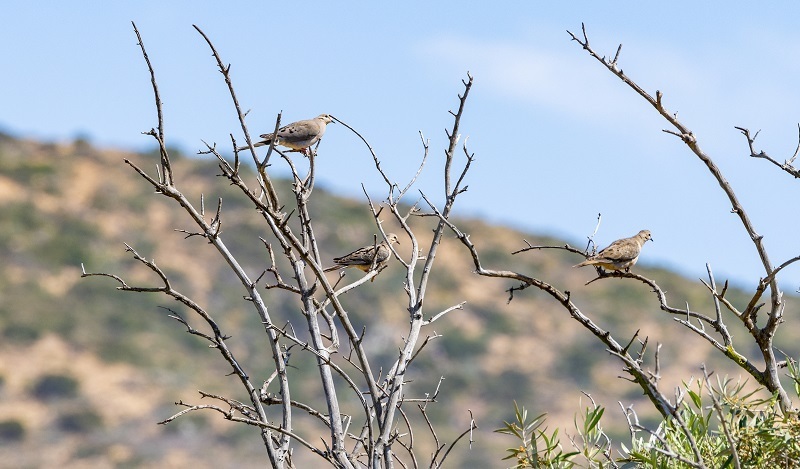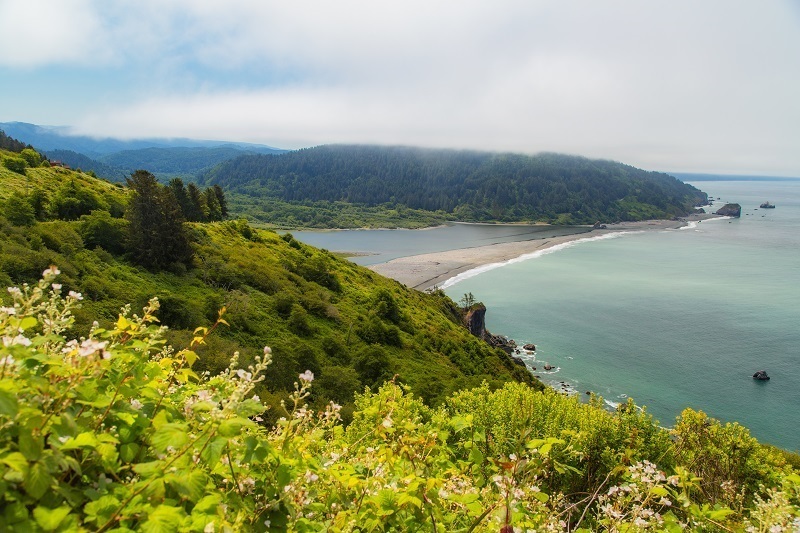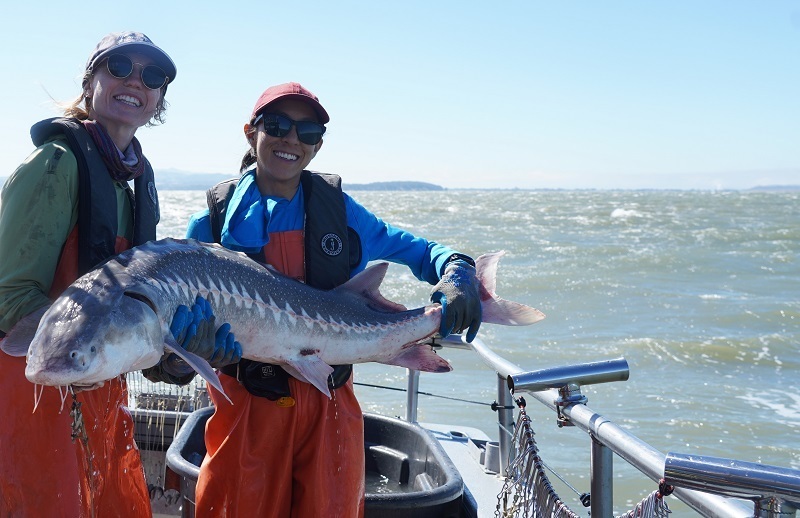Fish Report for 8-29-2024
CDFW Wildlife Areas Prepared to Welcome Dove Hunters Sept. 1

by California Department of Fish & Wildlife
8-29-2024
Website
With select fields plowed, planted, mowed or otherwise primed, the California Department of Fish and Wildlife (CDFW) is prepared to welcome dove hunters to many of its wildlife areas for the Sept. 1 season opener.
“Doves key in on bare ground with seeds because 99 percent of their diet is seeds,” said Ian Dwight, an environmental scientist with CDFW’s Upland / Small Game Unit. “This is something our wildlife areas know very well and will often (conduct) mowing practices and grow food plots so that there are ample opportunities in the beginning of the season for dove.”
Safflower, sunflower, wheat, milo and millet are the most common grain crops planted at CDFW wildlife areas in preparation for the dove opener. The crop fields benefit many other wildlife species throughout the fall and winter.
“In September, after fields have been harvested in August by a lot of farmers, doves will be attracted to safflower and sunflower first before they feed out on the winter-planted cereal grains,” Dwight said.
Migratory mourning dove and white-winged dove populations concentrate in California’s agricultural areas in the late summer where seed crops are farmed and harvested in abundance. This makes CDFW wildlife areas in the Sacramento Valley, San Joaquin Valley, Imperial Valley and the Palo Verde Valley prime destinations for public land dove hunters.
Wildlife areas where habitat has been prepared to attract dove in 2024 include, but are not limited to, the Upper Butte Basin, Gray Lodge, Yolo Bypass, Oroville and Spenceville wildlife areas in the Sacramento Valley and the North Grasslands, Mendota and Los Banos wildlife areas in the San Joaquin Valley.
Southern California offers some of the best dove hunting anywhere in the nation. The top public land spots with prepared crop fields include CDFW’s Imperial Wildlife Area, the San Jacinto Wildlife Area, the Palo Verde Ecological Reserve with additional opportunities provided by CDFW and partners at the Imperial County Upland Game Fields.
Entry procedures can vary as do crop plantings from year to year. Hunters are advised to call ahead in preparing for their public land hunt. Not all CDFW wildlife areas are open to dove hunting Sept. 1. Many CDFW ecological reserves are closed to hunting altogether. To locate wildlife areas to hunt throughout the state, visit CDFW’s Places to Visit web page or Public Lands Viewer.
The Sunday, Sept. 1 dove opener falls on a weekend for the first time in five years, which means the single busiest hunting day of the year in California is likely to see even more kids, first-time hunters, families and groups of hunters afield compared to weekday openers in the recent past.
Hunters can target mourning dove and white-winged dove Sept. 1 through Sept. 15. Spotted doves and ringed turtle doves also become legal game. Mourning dove and white-winged dove have a daily bag limit of 15, up to 10 of which may be white-winged dove. The possession limit is triple the daily bag limit. There are no limits on spotted dove and ringed-turtle dove. The invasive Eurasian collared-dove is open year-round with no bag limits. Hunting of Eurasian collared-doves on CDFW Type A wildlife areas is limited to the mourning dove season. A dove identification guide (PDF) is available at CDFW’s website.
Hunters are strongly encouraged to review the dove hunting regulations and those governing CDFW lands available online: 2024-2025 California Waterfowl, Upland Game, and Public Use of Department Lands Regulations.
The second half of California’s dove season begins Nov. 9 and runs through Dec. 23. Many CDFW wildlife areas are open to dove hunting in the second half of the season on designated waterfowl shoot days when a Type A wildlife area pass will be required to enter.
Additional late-season dove hunts are offered through CDFW’s SHAREprogram, which provides public hunting opportunities on private farms and ranches throughout the state.
Minimum dove hunting requirements are a valid hunting license and upland game bird validation (validation not required for Junior Hunting License holders), good footwear, a shotgun of almost any gauge, nonlead shotgun shells, a cooler with ice to store birds, and plenty of water for the typically hot weather. Sunscreen and insect repellant are other must-have items for dove hunters.
For more information and resources on dove hunting, CDFW’s Advanced Hunter Education program has videos to help hunters. CDFW’s R3 program has additional resources and videos as well for newcomers to dove hunting.
Dove hunters may also encounter a banded dove. As of Aug. 27, CDFW staff and volunteers throughout the state had banded about 2,700 mourning dove and 127 white-winged dove. Hunters are asked to report their banded birds to the U.S. Geological Survey to help with further dove research.
< Previous Report Next Report >
< Previous Report Next Report >
More Reports
Klamath River Fishery Plan Calls for Wild, Self-Sustaining Salmon, Steelhead Populations in Newly Undammed River
Klamath River - Upper - CA
8-29-2024
The California Department of Fish and Wildlife (CDFW) has released the “Klamath River Anadromous Fishery Reintroduction and Restoration Monitoring Plan,”...... Read More

8-22-2024
The California Fish and Game Commission (Commission) has adopted regulations to reopen sport fishing for white sturgeon on a catch-and-release...... Read More

Website Hosting and Design provided by TECK.net